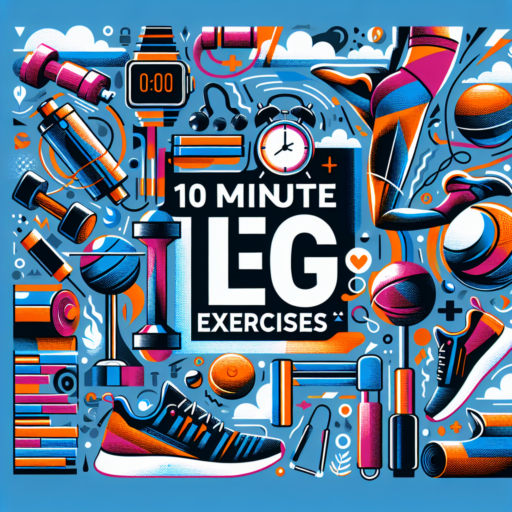What is a Calorie Calculator Heart Rate?
A Calorie Calculator Heart Rate is a specialized tool designed to estimate the number of calories an individual burns during physical activity, taking into account their heart rate. This advanced form of calorie calculation offers a more personalized insight compared to standard calorie calculators, which often only consider factors like age, weight, and exercise duration. By incorporating heart rate data, these calculators measure the intensity of the activity, providing a more accurate estimate of calories burned.
The significance of using a heart rate to calculate calorie burn lies in its ability to reflect an individual’s effort level more accurately. Different activities can cause different heart rate responses in different individuals; for instance, what may be a moderate activity for one person could be a high-intensity activity for another. Therefore, a Calorie Calculator Heart Rate uses this physiological response to precisely quantify the energy expenditure during exercise sessions, tailoring the calorie count to the user’s personal fitness level.
Integrating heart rate data into calorie calculation is especially beneficial for those looking to optimize their workouts, whether for weight loss, fitness maintenance, or performance training. By knowing exactly how many calories are burned, individuals can adjust their exercise intensity, duration, and type to better meet their health and fitness goals. Additionally, it encourages users to engage in heart rate zones that are most beneficial for their specific objectives, be it fat burning, cardio conditioning, or peak performance.
How Does Heart Rate Affect Calorie Burning?
Understanding the relationship between heart rate and calorie burning can significantly enhance your fitness journey and weight loss efforts. As your heart rate accelerates during exercise, it’s an indication that your body is using more energy. This energy expenditure is directly linked to calorie burn. Essentially, the higher your heart rate, the more calories you are likely to burn. This correlation is a vital piece of information for those looking to optimize their workouts for maximum fat loss.
During exercise, reaching a target heart rate zone is crucial. This target zone varies from person to person and is usually calculated as a percentage of your maximum heart rate. Staying within this zone ensures that you are exercising at an intensity level that is most effective for burning fat. Activities such as high-intensity interval training (HIIT) are renowned for pushing your heart rate up, thereby maximizing calorie burn within a short timeframe. This is because vigorous activities force your body to work harder to supply the necessary oxygen and energy, thus increasing heart rate and, subsequently, calorie expenditure.
However, it’s important to note that the body’s response to increased heart rate and calorie burning can be influenced by several factors, including age, fitness level, and overall health. As such, individual experiences with heart rate elevation and calorie burning during exercises may vary. Monitoring your heart rate during workouts and tailoring your exercise intensity to stay within your personalized target heart rate zone can help you effectively manage your weight loss or fitness regimen. This personalized approach ensures that you are not overexerting yourself, while still maximizing calorie burn.
Top Benefits of Using a Heart Rate Based Calorie Calculator
Understanding the advantages of utilizing a heart rate based calorie calculator can significantly influence your fitness and health journey. This approach offers a personalized insight into your body’s functioning, making it a powerful tool for anyone looking to optimize their fitness regime or weight loss strategy. Unlike generic calculators, a heart rate based method considers your unique physiological responses, providing more accurate and reliable data.
One of the primary benefits of using a heart rate based calorie calculator is its ability to offer real-time feedback on your body’s calorie expenditure. This precision allows for tailored diet and exercise adjustments, ensuring you meet your health goals efficiently. It’s particularly beneficial for those engaged in heart rate zone training, as it aligns calorie intake with workout intensity, fostering a more informed approach to nutrition and physical activity.
Another advantage is the enhancement of workout effectiveness. By understanding how different activities and their intensities translate into calorie burn, individuals can make educated decisions about their exercise routines. This knowledge not only helps in refining fitness strategies but also in avoiding overtraining and injury, promoting a sustainable and healthy lifestyle.
Step-by-Step Guide to Calculating Calories Burned by Heart Rate
Understanding how to calculate the calories burned by heart rate can be a game-changer for anyone trying to manage their weight or improve their fitness levels. An accurate calculation requires more than just monitoring your heart rate; it involves knowing how to interpret this data to estimate calorie expenditure. This guide simplifies the process into manageable steps.
Identify Your Average Heart Rate
The first step in calculating the calories you burn is determining your average heart rate during physical activity. Use a reliable heart rate monitor or smartwatch to record your heart rate at regular intervals, such as every minute. Then, calculate the average rate over the duration of your workout. This number is crucial as it forms the basis for the calculation.
Understand the Heart Rate Zones
Different heart rate zones indicate different levels of exercise intensity. These zones range from light activity to maximum effort and are typically defined as a percentage of your maximum heart rate. Knowing the zone in which you mostly exercised can help refine the accuracy of your calorie burn estimate. High-intensity zones will generally result in a higher caloric burn.
To calculate calories burned, you can then apply a mathematical formula or use an online calculator. While this guide does not delve into specific formulas, understanding that they often factor in your age, weight, heart rate, and exercise duration is essential. By inputting these variables, you can achieve a reliable estimate of your calorie expenditure based on heart rate data.
Factors Influencing Accuracy in a Calorie Calculator Heart Rate
When it comes to monitoring fitness progress, a calorie calculator based on heart rate is a popular tool among enthusiasts and professionals alike. However, the accuracy of these measurements can be influenced by a variety of factors. Understanding these can help users interpret their data more effectively and make informed decisions about their health and fitness routines.
Individual Physical Characteristics
The first aspect to consider is individual physical characteristics. Factors such as age, weight, height, gender, and body composition significantly affect how many calories one burns and, consequently, the accuracy of calorie calculations based on heart rate. For instance, more muscular individuals may burn more calories at rest compared to those with a higher percentage of body fat. Therefore, ensuring that personal data entered into a calorie calculator is accurate and up-to-date is crucial for reliable readings.
Heart Rate Monitor’s Quality and Placement
Another critical factor to consider is the quality and placement of the heart rate monitor used. High-quality monitors are more likely to provide accurate heart rate readings, which are the foundation for calculating calorie burn. Moreover, the correctness of the placement, whether it’s a chest strap, wrist monitor, or another type, can significantly influence the data accuracy. Improper placement can lead to faulty heart rate data, leading to inaccurate calorie burn estimates.
Type of Activity
The type of physical activity being performed also plays a significant role in determining calorie burn accuracy. Activities that involve irregular heart rates, such as interval training or sports that include short bursts of effort followed by periods of rest, can be harder to track accurately. Calorie calculators that factor in heart rate variability and integrate specific algorithms for different types of activities tend to offer more precise results. Knowing the limitations and strengths of your calorie calculator’s ability to track various activities is essential for accurate calorie tracking.
Comparing Popular Heart Rate Calorie Calculators
When it comes to tracking fitness progress, understanding the efficiency of various heart rate calorie calculators can be a game-changer. These tools not only aid in personal health assessments but also help tailor fitness programs to suit individual needs. In comparing popular options, features such as accuracy, ease of use, and compatibility with other fitness devices play crucial roles.
Accuracy is paramount when evaluating these calculators. Devices that use personalized information, such as age, weight, heart rate, and duration of exercise, tend to offer more precise readings. It’s interesting how technology advancements have improved the precision of these tools, making them indispensable companions in our fitness journeys.
Another aspect to consider is the ease of use. A user-friendly interface is essential for a hassle-free experience. Calculators that provide quick inputs and clear, understandable outputs allow for seamless integration into daily workouts. Additionally, compatibility with various fitness apps and devices enhances the utility of these calculators, making them a versatile choice for enthusiasts aiming to maintain an accurate log of their calorie expenditure.
Integrating Heart Rate Monitors with Calorie Calculators for Optimized Fitness Tracking
Integrating heart rate monitors with calorie calculators represents a significant advancement in the realm of fitness tracking technology. By combining these two features, individuals can obtain a more comprehensive overview of their physical activity and its effects. This integration enables users to monitor not just the intensity of their workout via heart rate levels but also the amount of calories burned during exercises. Such detailed feedback is instrumental in tailoring fitness routines to meet specific health and fitness goals.
Benefits of Integration
The synergy between heart rate monitors and calorie calculators offers a multitude of benefits. For one, it allows for real-time tracking of calorie expenditure, giving users immediate feedback on their workout effectiveness. This data is crucial for people aiming to lose weight, gain muscle, or simply maintain a healthy lifestyle. Furthermore, by understanding how heart rate correlates with calorie burn, individuals can adjust their exercise intensity for optimal results, avoiding under or over-exertion.
Customizing Fitness Plans
Another advantage of this integrated approach is the potential for highly customized fitness plans. With detailed insights into how different activities influence heart rate and calorie expenditure, users and fitness coaches alike can devise more effective and personalized workout regimes. This customization not only enhances motivation by setting achievable goals but also increases the overall efficiency of exercise routines, leading to better and faster results.
Understanding Your Heart Rate Zones for Effective Calorie Burn
Knowing your heart rate zones is crucial for maximizing calorie burn during exercise. These zones, often classified from light intensity to high intensity, represent different levels of exertion and fat burning. By training in the right heart rate zone, you can ensure your workouts are both efficient and effective.
How to Identify Your Heart Rate Zones
To accurately identify your heart rate zones, you first need to determine your maximum heart rate (MHR). A general formula to estimate this is 220 minus your age. From there, zones are often broken down into percentages of your MHR, allowing you to target specific intensity levels during your workouts. For example, moderate exercise might occur at 50-70% of your MHR, while high-intensity interval training (HIIT) would push you into the 70-85% range.
The Benefits of Training in Different Zones
Each heart rate zone serves a different purpose in your fitness regime. Training in the lower zones, such as the fat-burning zone, is great for weight loss and building endurance. Conversely, pushing into higher zones increases your cardiovascular health and improves your VO2 max, which is a measure of your body’s ability to utilize oxygen. Knowing how to navigate these zones can make your fitness journey more structured and goal-oriented.
Training within specific heart, rate zones not only optimizes calorie burn but also tailors your workout to meet your fitness goals. Whether you’re looking to shed pounds, improve endurance, or enhance cardiovascular health, understanding and utilizing heart rate zones can be a game-changer. Therefore, incorporate this knowledge into your exercise routine and start experiencing more targeted results.
FAQs on Calorie Calculation Using Heart Rate
Understanding the relationship between heart rate and calorie expenditure is crucial for anyone looking to optimize their fitness or weight loss journey. It’s a topic surrounded by questions, whether you’re a seasoned athlete or just beginning to monitor your physical activity. Here, we delve into some of the most frequently asked questions regarding calorie calculation using heart rate.
Why does heart rate matter for calorie calculation?
At the core of calorie calculation, heart rate serves as a pivotal indicator of your body’s exertion level. The fundamental principle is that the higher your heart rate, the more intense the activity, leading to a greater calorie burn. Monitoring your heart rate provides a more accurate insight into your personal energy expenditure, as it’s influenced by both your fitness level and the effort you’re putting into the activity.
Can you estimate calorie burn solely through heart rate?
While heart rate is a significant factor in estimating calorie burn, it’s part of a bigger picture. Accurate calorie calculation using heart rate typically requires additional data, such as age, weight, and sometimes gender, to provide a more precise measurement. Advanced fitness trackers and heart rate monitors often incorporate these variables, offering a comprehensive view of your calorie expenditure.
How do fitness trackers calculate calories burnt using heart rate?
Modern fitness trackers employ complex algorithms that take into account your heart rate alongside other personal attributes to estimate calorie burn. These devices measure the intensity of your workouts by tracking your heart rate fluctuations. By comparing these fluctuations with your baseline data (age, weight, etc.), they can provide a tailored calculation of the calories you’ve burnt during a session, making the process as individualized and accurate as possible.
Real User Experiences: Success Stories with Calorie Calculator Heart Rate Tools
Tracking fitness progress has always been a challenge for many, but with the advent of calorie calculator heart rate tools, many individuals have found a reliable companion in their fitness journey. These tools have revolutionized how we approach our health goals, making the process not only manageable but also enjoyable. In the following sections, we delve into real user experiences to shed light on the success stories that have emerged thanks to these innovative applications.
Transformative Health Journeys
Among the multitude of stories, one that stands out is from a user who embarked on a transformative health journey. Initially struggling with maintaining a balanced diet and regular exercise, the integration of a calorie calculator heart rate tool into their routine made a significant difference. The user highlighted how the tool provided detailed insights into how each physical activity impacted their calorie count and heart rate, enabling a more informed approach to health and fitness. This led to not only a substantial weight loss but also an increase in overall stamina and well-being.
Maximizing Workout Efficiency
Another powerful testament comes from a fitness enthusiast who used the calorie calculator heart rate tool to maximize workout efficiency. By understanding the correlation between heart rate zones and calorie burn, the user was able to adjust their exercise regimes to optimize fat loss and improve cardiovascular health. This precise method of tracking progress was credited for achieving fitness goals faster than anticipated, showcasing the tool’s capability to tailor fitness plans to individual needs.
These stories are a mere glimpse into the plethora of success tales surrounding the use of calorie calculator heart financing tools. Each narrative underscores the tool’s ability to personalize fitness journeys, making health goals more attainable and sustainable. With technology at our fingertips, transforming our approach to health and fitness is no longer just a possibility but a reality for many.










